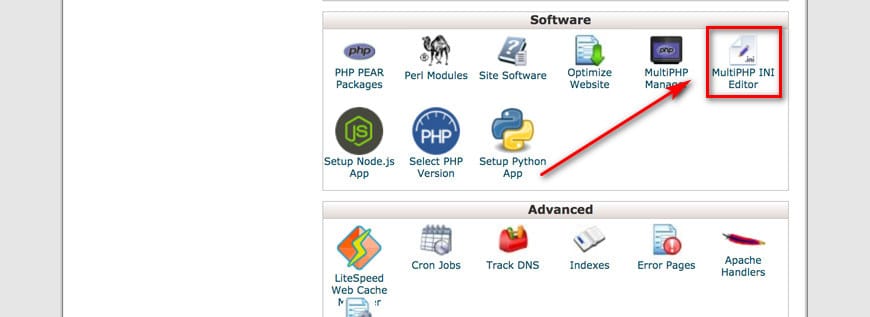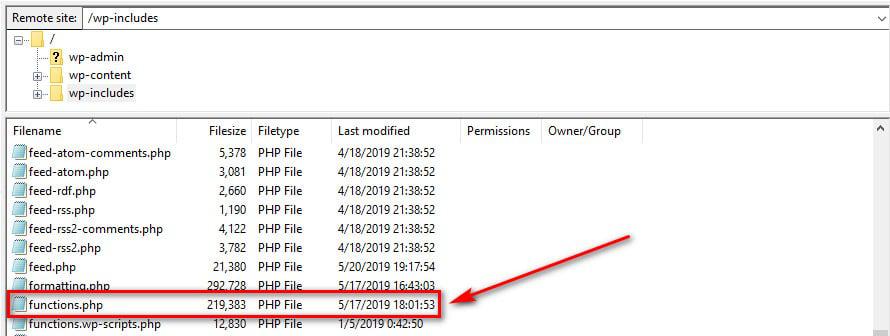php file upload error 1
i got a undefined index error when file upload in php
i searched again and again but could not find the right answer. here is the situation. i got more than one forms in the same php file and below shows the code.
when i echo as below
it shows 0 as the count and
Notice: Undefined index: addProjectFileUploadPath in C:\wamp.
updated: probelm solved. error came due to 3rd party jquery plugin called «fileinput»
4 Answers 4
add enctype=»multipart/form-data» to the form
Try looking at the entire array with this:
Then use this manual page to let you know what the error numbers mean. That will probably give you a good idea of what is going on.
Okay, there are a couple of things you need to be aware of.
1) You can have as many forms on a page as you want, but you can only submit one of them. You need to make sure the form you expect is being submitted. I’m assuming you’re using the submit button names for doing this. However this can result in problems if someone submits the form by hitting enter in a text entry region, the button won’t be submitted. A hidden field would be better as it would always be submitted.
2) There doesn’t seem to be a MAX_FELE_SIZE form input anywhere in your file upload form. File uploading will not work without it. You need to put something like before the file inputs on your form.
PHP move_uploaded_file() error?
I using following code and it is successfully uploading files on my local machine. It is showing «Successfully uploaded» on my local machine.
But when I used this code on my online server then it is not uploading file and just showing message «Not uploaded».
13 Answers 13
Edit the code to be as follows:
It will give you one of the following error code values 1 to 8:
UPLOAD_ERR_INI_SIZE = Value: 1; The uploaded file exceeds the upload_max_filesize directive in php.ini.
UPLOAD_ERR_FORM_SIZE = Value: 2; The uploaded file exceeds the MAX_FILE_SIZE directive that was specified in the HTML form.
UPLOAD_ERR_PARTIAL = Value: 3; The uploaded file was only partially uploaded.
UPLOAD_ERR_NO_FILE = Value: 4; No file was uploaded.
UPLOAD_ERR_NO_TMP_DIR = Value: 6; Missing a temporary folder. Introduced in PHP 5.0.3.
UPLOAD_ERR_CANT_WRITE = Value: 7; Failed to write file to disk. Introduced in PHP 5.1.0.
UPLOAD_ERR_EXTENSION = Value: 8; A PHP extension stopped the file upload. PHP does not provide a way to ascertain which extension caused the file upload to stop; examining the list of loaded extensions with phpinfo() may help.
This will instantly flag any file permission errors.
Check that the web server has permissions to write to the «images/» directory
How can I know that what is the problem
Easy. Refer to the error log of the webserver.
NEVER do it.
An average user will unerstand nothing of this error.
A malicious user should get no feedback, especially in a form of very informative error message.
Just show a page with excuses.
If you don’t have access to the server’s error log, your task become more complicated.
There are several ways to get in touch with error messages.
To display error messages on screen you can add these lines to the code
or to make custom error logfile
and there are some other ways.
but you must understand that without actual error message you can’t move. It’s hard to be blind in the dark
move_uploaded_file() will return:
PHP Error Log
My php error log was at: /var/log/httpd/error_log and had these errors:
Warning: move_uploaded_file(images/robot.jpg): failed to open stream: Permission denied in /var/www/html/mysite/mohealth.php on line 78
Warning: move_uploaded_file(): Unable to move ‘/tmp/phpsKD2Qm’ to ‘images/robot.jpg’ in /var/www/html/mysite/mohealth.php on line 78
move_uploaded_file() tries to move files from a temporary directory to a destination directory. When apache process tried to move files, it could not read the temporary or write to the destination dir.
Add permissions as necessary using chown or chgrp
Restart Apache using sudo service httpd restart
Handling file uploads
Table of Contents
User Contributed Notes 32 notes
Example:
( ‘Content-Type: text/plain; charset=utf-8’ );
echo ‘File is uploaded successfully.’ ;
Clarification on the MAX_FILE_SIZE hidden form field:
PHP has the somewhat strange feature of checking multiple «maximum file sizes».
The two widely known limits are the php.ini settings «post_max_size» and «upload_max_size», which in combination impose a hard limit on the maximum amount of data that can be received.
Please note that using this PHP feature is not a good idea. A form field can easily be changed by the client. If you have to check the size of a file, do it conventionally within your script, using a script-defined integer, not an arbitrary number you got from the HTTP client (which always must be mistrusted from a security standpoint).
Be reminded that this mime type can easily be faked as PHP doesn’t go very far in verifying whether it really is what the end user reported!
My best bet would be for you to check the extension of the file and using exif_imagetype() to check for valid images. Many people have suggested the use of getimagesize() which returns an array if the file is indeed an image and false otherwise, but exif_imagetype() is much faster. (the manual says it so)
IE on the Mac is a bit troublesome. If you are uploading a file with an unknown file suffix, IE uploads the file with a mime type of «application/x-macbinary». The resulting file includes the resource fork wrapped around the file. Not terribly useful.
(There is probably a better way to do it, but this solved my problem):
If «large files» (ie: 50 or 100 MB) fail, check this:
It may happen that your outgoing connection to the server is slow, and it may timeout not the «execution time» but the «input time», which for example in our system defaulted to 60s. In our case a large upload could take 1 or 2 hours.
Additionally we had «session settings» that should be preserved after upload.
1) You might want review those ini entries:
* session.gc_maxlifetime
* max_input_time
* max_execution_time
* upload_max_filesize
* post_max_size
2) Still fails? Caution, not all are changeable from the script itself. ini_set() might fail to override.
You can see that the «upload_max_filesize», among others, is PHP_INI_PERDIR and not PHP_INI_ALL. This invalidates to use ini_set():
http://www.php.net/manual/en/configuration.changes.modes.php
3) Still fails?. Just make sure you enabled «.htaccess» to overwrite your php settings. This is made in the apache file. You need at least AllowOverride Options.
You will necessarily allow this manually in the case your master files come with AllowOverride None.
Depending on the system, to allow «large file uploads» you must go up and up and up and touch your config necessarily up to the apache config.
These work for me, for 100MB uploads, lasting 2 hours:
In the example,
— As I last 1 to 2 hours, I allow 3 hours (3600×3)
— As I need 100MB, I allow air above for the file (110M) and a bit more for the whole post (120M).
For those of you trying to make the upload work with IIS on windows XP/2000/XP Media and alike here is a quick todo.
2) In windows explorer browse to the upload directory created above and share it. To do that execute the following substeps.
a) Right click the folder click «sharing and security. »
b) Check ‘Share this folder on the network’
c) Check ‘Allow network users to change my files’ ( THIS STEP IS VERY IMPORTANT )
d) click ‘ok’ or ‘apply’
3) you can then go in the IIS to set read and write permissions for it. To do that execute the followin substeps.
a) Open IIS (Start/Controp Panel (classic View)/ Admistrative tools/Internet Information Service
b) Browse to your folder (the one we created above)
c) right click and select properties.
d) in the Directory tab, make sure, READ, WRITE, AND DIRECTORY BROWSING are checked.
e) For the security freaks out there, You should also make sure that ‘execute permissions:’ are set to Script only or lower (DO NOT SET IT TO ‘script and executable)'( that is because someone could upload a script to your directory and run it. And, boy, you do not want that to happen).
Send me feed back it if worked for you or not so that I can update the todo.
PS: BIG thanks to oportocala
Using /var/www/uploads in the example code is just criminal, imnsho.
One should *NOT* upload untrusted files into your web tree, on any server.
Nor should any directory within your web tree have permissions sufficient for an upload to succeed, on a shared server. Any other user on that shared server could write a PHP script to dump anything they want in there!
One’s code should INSPECT the actual file to see if it looks kosher.
For example, images can quickly and easily be run through imagegetsize and you at least know the first N bytes LOOK like an image. That doesn’t guarantee it’s a valid image, but it makes it much less likely to be a workable security breaching file.
For Un*x based servers, one could use exec and ‘file’ command to see if the Operating System thinks the internal contents seem consistent with the data type you expect.
I’ve had trouble in the past with reading the ‘/tmp’ file in a file upload. It would be nice if PHP let me read that file BEFORE I tried to move_uploaded_file on it, but PHP won’t, presumably under the assumption that I’d be doing something dangerous to read an untrusted file. Fine. One should move the uploaded file to some staging directory. Then you check out its contents as thoroughly as you can. THEN, if it seems kosher, move it into a directory outside your web tree. Any access to that file should be through a PHP script which reads the file. Putting it into your web tree, even with all the checks you can think of, is just too dangerous, imnsho.
There are more than a few User Contributed notes here with naive (bad) advice. Be wary.
Php file upload error 1
UPLOAD_ERR_OK
Значение: 0; Ошибок не возникло, файл был успешно загружен на сервер.
UPLOAD_ERR_INI_SIZE
UPLOAD_ERR_FORM_SIZE
Значение: 2; Размер загружаемого файла превысил значение MAX_FILE_SIZE, указанное в HTML-форме.
UPLOAD_ERR_PARTIAL
Значение: 3; Загружаемый файл был получен только частично.
UPLOAD_ERR_NO_FILE
Значение: 4; Файл не был загружен.
UPLOAD_ERR_NO_TMP_DIR
Значение: 6; Отсутствует временная папка. Добавлено в PHP 4.3.10 и PHP 5.0.3.
UPLOAD_ERR_CANT_WRITE
Значение: 7; Не удалось записать файл на диск. Добавлено в PHP 5.1.0.
UPLOAD_ERR_EXTENSION
Константы были добавлены в PHP 4.3.0.
Коментарии
In regards to the dud filename being sent, a very simple way to check for this is to check the file size as well as the file name. For example, to check the file size simple use the size attribute in your file info array:
Upload doesnt work, and no error?
just see, if «post_max_size» is lower than the data you want to load.
in the apache error log, there will be an entry like «Invalid method in request». and in the access log, there will be two requests: one for the POST, and another that starts with all «—-» and produces a 501.
enctype=»multipart/form-data» works fine
This is probably useful to someone.
if post is greater than post_max_size set in php.ini
Clarification on the MAX_FILE_SIZE hidden form field and the UPLOAD_ERR_FORM_SIZE error code:
PHP has the somewhat strange feature of checking multiple «maximum file sizes».
The two widely known limits are the php.ini settings «post_max_size» and «upload_max_size», which in combination impose a hard limit on the maximum amount of data that can be received.
Please note that using this PHP feature is not a good idea. A form field can easily be changed by the client. If you have to check the size of a file, do it conventionally within your script, using a script-defined integer, not an arbitrary number you got from the HTTP client (which always must be mistrusted from a security standpoint).
Hopefully, this tidbit will save someone else some grief.
[EDIT BY danbrown AT php DOT net: This code is a fixed version of a note originally submitted by (Thalent, Michiel Thalen) on 04-Mar-2009.]
This is a handy exception to use when handling upload errors:
Seems like PHP just introduced you to yet another common pitfall.
One thing that is annoying is that the way these constant values are handled requires processing no error with the equality, which wastes a little bit of space. Even though «no error» is 0, which typically evaluates to «false» in an if statement, it will always evaluate to true in this context.
You ask the question: Why make stuff complicated when you can make it easy? I ask the same question since the version of the code you / Anonymous / Thalent (per danbrown) have posted is unnecessary overhead and would result in a function call, as well as a potentially lengthy switch statement. In a loop, that would be deadly. try this instead:
Update to Adams old comment.
This is probably useful to someone.
This updates «adam at gotlinux dot us» above and makes it version aware, and also adds newer constants to the array.
The reason we want to check the version is that the constants are not defined in earlier versions, and they appear later in the array. They would effectively overwrite the «0» index (no error) with an error message when the file actually uploaded fine.
It also drops the constant’s value (0,1,2, etc) for the errors, in the likely event that they are changed later (the code should still work fine).
= array(
0 => «There is no error, the file uploaded with success»
, UPLOAD_ERR_INI_SIZE => «The uploaded file exceeds the upload_max_filesize directive in php.ini»
, UPLOAD_ERR_FORM_SIZE => «The uploaded file exceeds the MAX_FILE_SIZE directive that was specified in the HTML form»
, UPLOAD_ERR_PARTIAL => «The uploaded file was only partially uploaded»
, UPLOAD_ERR_NO_FILE => «No file was uploaded»
);
MOVE UPLOADED FILE FAILED!!
But i see only one side to generating Exceptions. ie For the developers.
I have expanded @adam at gotlinux dot us’s example a bit with proper UPLOAD_FOO constants and gettext support. Also UPLOAD_ERR_EXTENSION is added (was missing in his version). Hope this helps someone.
We use this function to handle file uploads.
When uploading a file, it is common to visit the php.ini and set up upload_tmp_dir = /temp but in the case of some web hostess as fatcow you need to direct not only /tmp but upload_tmp_dir = /hermes/walnaweb13a/b345/moo.youruser/tmp
Как исправить ошибку “Загруженный файл превышает директиву upload_max_filesize в php.ini”?
«Загруженный файл превышает директиву upload_max_filesize в php.ini» – это ошибка, означающая, что загружаемый вами файл превышает лимит загрузки WordPress. Чтобы исправить ошибку «Загруженный файл превышает …», вам необходимо увеличить upload_max_filesize с помощью файла config.php или php.ini. Вы можете найти инструкции ниже.
Эта ошибка также может отображаться как ошибка HTTP в WordPress.
Исправить Загруженный файл превышает директиву upload_max_filesize:
Какой загруженный файл превышает директиву upload_max_filesize в ошибке php.ini?
Хостинг-провайдеры ограничивают размер загружаемого файла для защиты сервера. Код Upload_max_filesize можно найти в вашем файле php.ini. Файл php.ini – это структура PHP по умолчанию на вашем сервере.
Эти ограничения в основном устанавливаются хостинг-провайдером, и вы можете увидеть их, перейдя в панель управления WordPress, Медиа и нажав Добавить.
Как исправить загруженный файл превышает директиву upload_max_filesize в ошибке php.ini?
Чтобы исправить эту ошибку, вам необходимо увеличить размер загрузки в файле php.ini. Есть много способов увеличить размер загрузки, которые мы обсудим ниже:
1. Увеличьте upload_max_filesize в WordPress
С помощью FTP-клиента подключитесь к корневому каталогу вашего сервера и вставьте приведенный ниже код в конец файла wp-config.php:
Теперь вы изменили ограничение на размер загрузки до 256 мегабайт.
2. Увеличьте upload_max_filesize в cPanel
Если ваш хост использует cPanel, войдя в свою cPanel, вы можете просто внести изменения в php.ini.
Сначала найдите MultiPHP INI Editor. Затем выберите свой сайт на открывшейся странице. Вы можете увидеть несколько настроек, которые можно редактировать. Прокрутите вниз до upload_max_filesize и измените его значение на желаемое.
3. Увеличьте upload_max_filesize с помощью FTP.
Как упоминалось выше, php.ini управляет структурой PHP вашего сервера. Если ваш хостинг-провайдер разрешает вам доступ к файлу php.ini, вы можете внести в него необходимые изменения.
С помощью FTP-клиента подключитесь к своему серверу и перейдите в свой каталог. Если вы не можете найти php.ini (или php5.ini) для его редактирования, вы можете просто создать файл с тем же именем и добавить в него код, указанный ниже.
Если вы используете XAMPP, Wamp или MAMP, вы можете найти php.ini в:
Убедитесь, что вы изменили имя пользователя на свой фактический путь.
Вышеупомянутые конфигурации могут отличаться для разных хостинг-провайдеров. Поэтому, чтобы убедиться, что они действительно подходят для вашего сервера, вы можете просто связаться с вашим хостинг-провайдером или просмотреть их форумы.
5. Увеличьте upload_max_filesize в файле function.php.
Чтобы исправить ошибку upload_max_filesize в WordPress, вы также можете добавить приведенный ниже код в файл functions.php дочерней темы:
Вы можете изменить числа, указанные выше, на те ограничения, которые вам подходят.
Вывод
Если ни один из вышеперечисленных методов не помог вам, вам необходимо связаться со службой поддержки вашего хостинг-провайдера и сообщить им о ситуации.
Чтобы убедиться, что описанные выше методы сработали, вы можете перейти на панель управления WordPress, медиа и нажать «Добавить новый» и найти ограничение на размер загрузки. Если лимит изменился с прежнего на число, которое вы ввели в свои коды, значит, оно сработало. Если нет, то вам необходимо связаться с вашим хостинг-провайдером.
Имейте в виду, что если у вас по-прежнему возникают проблемы с загрузкой файла на веб-сайт, вы можете использовать FTP-клиент для загрузки файлов на сервер. Потому что FTP не имеет ограничений на размер загрузки.








